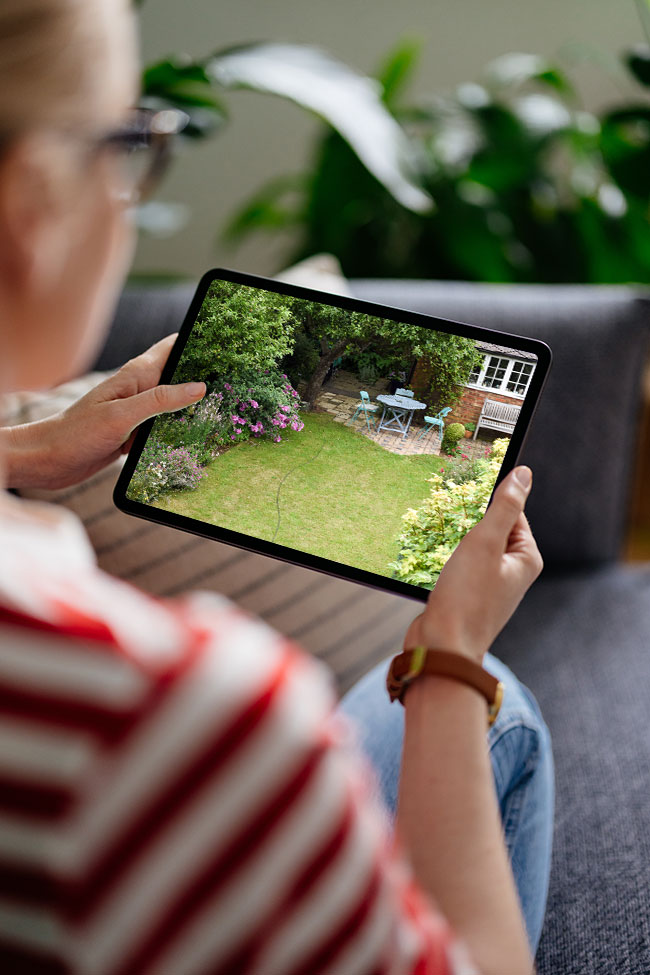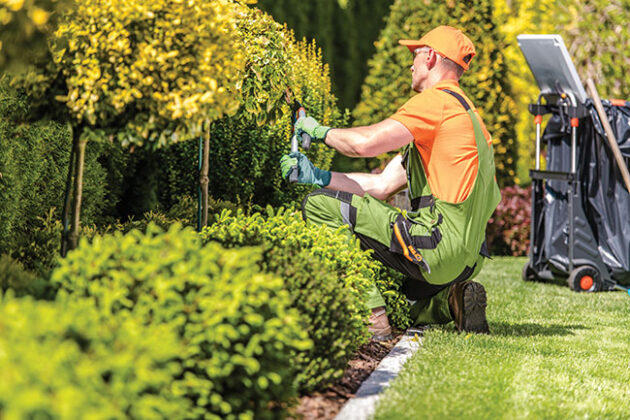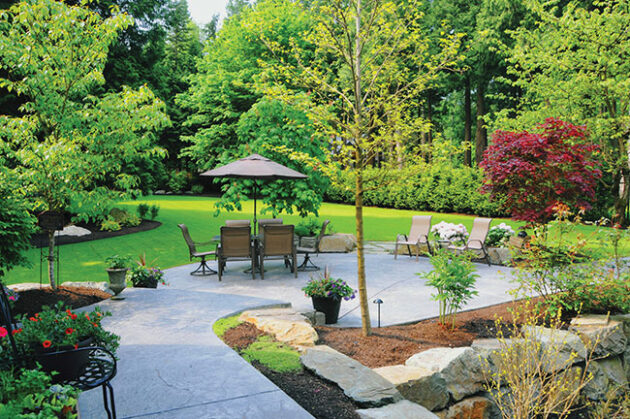
Features
Landscaping
Technology
Engage the ‘Now’ customer digitally with up-to-date website, social media postings
Landscape contractors need a ‘sexy’ online presence to stay ahead in the industry
February 7, 2024 By Mike Jiggens
 A potential landscaping customer should become easily engaged visiting a contractor’s website.
Photo credits: miniseries & tagphoto / Getty Images
A potential landscaping customer should become easily engaged visiting a contractor’s website.
Photo credits: miniseries & tagphoto / Getty Images In the ever-evolving post-COVID business world, maintaining competitiveness among landscaping companies is increasingly dependent on the development of a visually appealing and user-friendly website. Attendees at January’s Landscape Congress in Toronto learned the value of creating a “sexy” online presence, underscoring the pivotal role it plays in engaging customers and staying ahead in the industry.
“We became as an industry more important through COVID,” Kevin Battistoni, Midwest sales manager for Hunter Industries, said. “People were working from home, trapped at home and were putting more money into their homes.”
The key to perpetuating that momentum is through digital engagement, he said.
The “now” customer was born during the COVID years which allowed such businesses as Amazon, Walmart and Target to thrive. Battistoni said the “now” customer is described as lazy and impulsive with a limited attention span who wants to engage on his or her terms with businesses.
“Anything short of them engaging with your brand on their terms on platforms they want to do it on is a bad customer experience by today’s standards.”
Battistoni said a landscaper who visits a potential jobsite and leaves without a signed contract and a deposit cheque will have his “digital footprint” checked out by the potential client.
“Sixty-six per cent of those people that you tried to sell to went to your website after you left,” he said. “If you’re doing a bid proposal and a competitor is doing a bid proposal, and both of you have a similar price and a similar reputation, the client will check your digital footprint. If your website is outdated, it might mean you losing the job potentially.”
Battistoni said 73 per cent of all small businesses serving the green industry have websites, yet only half of those have been updated since before the start of the COVID pandemic. He added it takes only half a second for someone to form an opinion of a website and only 2.6 seconds to fully judge a site. During those few seconds, a visitor will either become engaged or will leave, he said.
A survey of 3,000 consumers suggested 75 per cent of those polled judged the integrity of a company based solely on the aesthetics of its website.
Every website should feature on its home page a statement that tells visitors what the company does, Battistoni said, and it should include visual representation. Lazy and impulsive customers have a short “bandwidth” and must be told up front about a company’s services.
“You also have to tell people where you work so that potential customers aren’t on your site for several minutes, only to find out afterward that your business doesn’t service their region. Define what you do. Define where you do it.”
That information should be the first item of engagement on a website, he added.

A landscape contractor’s website should clearly depict the type of work a company offers its customers.
hoto credit: Welcomia / Getty Images
Think mobile over desktop
“Don’t go heavy in making your website look sexy from a desktop.” Battistoni recommended websites be designed so that they’re easy to navigate from a mobile view. “If it’s not, you’re behind already.”
He said 50 per cent of all users will not recommend a company that has a poor mobile website, “yet they are judging you on the aesthetics of your website alone.”
About 86 per cent of the world’s population owns a smart phone, Battistoni said, adding they may not have running water or a roof over their head but having a $1,200 device in their pocket is “an absolute obsession.”
He stressed that companies wishing to interact with others must figure out how to interact through their phones.
Companies looking to invest in updating their websites should think twice before doing it from a desktop perspective, he said, noting that’s gone the way of the dinosaur. The pendulum swung in the opposite direction in 2023 where more Internet activity is now being done on mobile devices.
“It’s not going back. Sixty to 70 per cent of all media is consumed on a smart phone.”
An effective website should not only include a “sexy” image on its home page, but also provide answers to frequently asked questions and feature Google reviews, he added.
“In today’s day and age, that’s as potent as it gets digitally.”
Google reviews are free and allow companies to “cherry pick” the most positive reviews. Landscaping companies can encourage their employees to solicit customer reviews when on the job.
“If we empower the employee and dangle the fruit where the homeowner can actually give that employee a tip without costing them anything – it takes a minute of their time to give a Google review – it’s a good way to go and it does work.”

Kevin Battistoni says landscape contractors’ website should feature a ‘sexy’ image to get potential customers’ attention.
Photo credit: DigiStu / Getty Images
The power of Google
More than 93 per cent of all website traffic is directed through Google, Battistoni said.
According to 2023 statistics on a global scale, the average person spends five hours and 24 minutes a day on a smart phone. Including desktop computers, total average screen time is 7.1 hours a day, representing about 22 per cent of an individual’s time while awake.
Battistoni said. 5.9 billion people throughout the world use social media, spending an average of 2½ hours each day on its various platforms.
“When we’re talking about the relationship between website and social media, the website is still the most important and is the light at the end of your social media tunnel.”
Information landscapers put out on social media is intended to drive followers to their website.
Google was the most visited website in 2023, accounting for 86 per cent of all visits. Rounding out the top five were social media platforms.
Battistoni said COVID isolated people who ordinarily are wired to connect.
“It’s embedded in our DNA that we want to connect with people, we want to maintain healthy relationships, we want to foster new relationships, we want to repair old relationships that were damaged… It’s just in our DNA.”
Social media is a hyper accelerant toward interacting with other people, he said, adding more people embraced social media during the isolation they felt during COVID. Once the pandemic began to wither, allowing personal interaction to resume, social media postings didn’t decline.
“It continues to increase.”
One of the best ways to increase social media engagement is through video content, Battistoni said, adding it’s 10 times more effective than using still images.
Uploading time lapse videos of projects undertaken at jobsites are particularly engaging and allow for eight hours of video to be compressed into 30 seconds.
“I get great engagement on social media with time lapse.”
The digital journey with a landscaping company must be simplified, Battistoni said, adding if it involves more than one click on a brand’s social content or website for the user to go where he wishes to go, “you lost them. It’s over.”
A good website and social media platforms are also important when recruiting prospective employees, Battistoni said.
“When you interview a prospective employee, it you think they’re not going to go to your LinkedIn, Facebook or website, they 100 per cent are. It you don’t have a website, or it’s outdated or your social media platforms don’t show well, that will weigh into their decision as to whether or not they come to work for your organization.”
Technology has been embraced by every age group, from the Generation Z population up to baby boomers. In fact, baby boomers tend to purchase most of the latest in technology and can usually afford it, he said.
Seventy-six per cent of the Generation Z population admits to having a cell phone addiction while 51 per cent of baby boomers make the same confession, “which means 49 per cent are still living in denial.”
Print this page